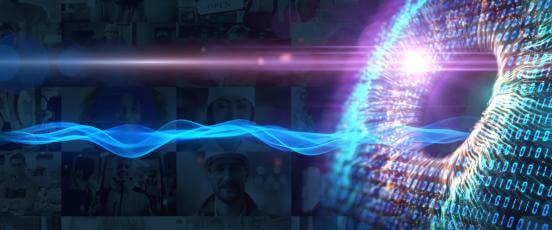How AI will free HR to give more time to employee experience

In this interview by the Telegraph, see how AI will enable greater human interaction, and how forward-thinking organisations like LSE are rolling out AI in their HR departments.
How will AI impact jobs?
It’s easy to read all the negative headlines about AI and assume its downsides outweigh any possible benefits. There’s a lot of anxiety around AI replacing jobs, particularly entry-level or admin-heavy roles, but it’s important to remember that the recent fall in job vacancies isn’t just because of AI; global disruption, high inflation, high interest rates and sluggish growth have all been contributing factors, too.
Instead of fearmongering, we should reframe the narrative around AI in the workplace, focusing on the ways that it can support employees, power their learning and development, and surface insights to help make data-driven decisions. At the moment, AI isn’t at the stage where it can fully take over entire jobs. It does, however, change the way that tasks are carried out, and organisations that don’t begin to implement it will only fall behind.
Is AI replacing jobs or tasks?
It’s important to make the distinction between jobs and tasks. Machines do tasks, not jobs; at least for now. This might seem like a hair-splitting distinction for those worried about AI taking over jobs, but to maximise the value of AI and help employees achieve their potential, it’s crucial that we understand AI’s capabilities and its limitations.
Tasks are singular. Jobs are collections of tasks bound together by human understanding, creativity and skills of communication, so viewing AI through this lens is the key to a more realistic and empathetic implementation in the workplace. As Tom Cheesewright explains in our World of Work 2050 webinar, “AI doesn’t take jobs. It does tasks that still rely on human input like prompting and reviewing.”
One person who can orchestrate many tasks with AI might be able to do the jobs of many people, but this isn’t about a simple one-for-one replacement. Employees who leverage the power of AI to complete tasks for them will vastly reduce their admin workload, giving them more time to focus on more productive or rewarding aspects of their role.
The benefits of AI in HR
In HR, AI has huge potential to reduce time spent on manual or time-consuming tasks like screening CVs, freeing up more time to focus on initiatives that require real human input like improving employee experience and building a stronger company culture.
AI is also fantastic at analysing employee data and surfacing insights to help HR make strategic decisions that have a positive impact on the business. For example, AI can predict turnover based on historical data, analyse performance across different departments or teams, detect absence patterns, or even track employee sentiment to identify disengagement risks before they escalate, helping HR to become more proactive in the way they work.
LSE's implementation of AI for HR
The London School of Economics and Political Science, one of our customers, is looking to roll out AI across their HR processes, from hiring and onboarding to payroll and answering employee queries. This will bring faster processing and more engagement, helping to reshape HR’s interactions with more than 4,000 employees. By using AI and automation for operational tasks, the team will have more time to spend on direct contact with the users of their HR services.
“We’ll be able to use that time freed up from automation and create value-added work where staff have direct calls with people who have particularly difficult or challenging issues,” says Indi Seehra, LSE’s Director of Human Resources.
AI can also be used to enhance emotional intelligence, an increasingly valuable asset. Emotional AI could help organisations address issues such as employee wellbeing, workplace relationships and individuals’ aspirations and goals. This is because some people are more comfortable discussing their personal and professional challenges with an AI bot rather than with a human being, suggests Seehra, as it provides a level of privacy and anonymity that human interaction lacks.
However, AI doesn’t have the human capabilities of self-awareness and self-reflection, and its advice can lack emotional depth. Seehra sees huge opportunities if researchers do manage to create AI with intuitive abilities in those key areas: “[Emotional] AI is something that could differentiate HR from all the other uses of AI in the workplace,” he says.
The key to implementing AI successfully
It’s very easy to produce an attractive demonstration of AI’s possibilities, but it’s much harder to scale it up in an environment where people are rightly concerned about the risks to security, reputation and data governance.
Most importantly, AI needs to be rolled out in a way that highlights how it can empower employees and encourages them to take full advantage of the tool. Neelam Talewar, Director of LSE’s People Management Transformation Programme, believes that LSE’s success in introducing AI to HR processes has moved purposefully, bringing employees along the journey. “We had to scale gradually, otherwise we wouldn’t have been as successful as we are,” she says.
Successful AI implementation starts with understanding the details of the jobs being done in each function of your business and the problems they face. In fact, Cisco’s AI Readiness Index found that while leadership teams are very receptive to AI projects, employee buy-in lags. The result is that only nine per cent of business leaders believe their corporate culture is fully prepared for the AI transition. And it’s easy to see why when AI tools are largely presented as an alternative to people: as automation, rather than augmentation.
Instead, it’s becoming increasingly important for leaders to empathise with employee experience and implement AI in ways that return time and value, allowing employees to focus their time on the work that they enjoy. This reframes investment in AI as something that solves problems and puts people first, improving both their performance and their experience at work.
This is a shortened version of an article produced by and published on Telegraph.co.uk – read the full article here.
Harnessing AI to create better futures
Learn more from Futurist Tom Cheesewright in the latest episode of our World of Work 2050 webinar series, focusing on the ways AI is reshaping the future of HR, payroll and finance. Register now to hear Tom’s expertise on making the most of AI while keeping human creativity at the heart of your organisation.



